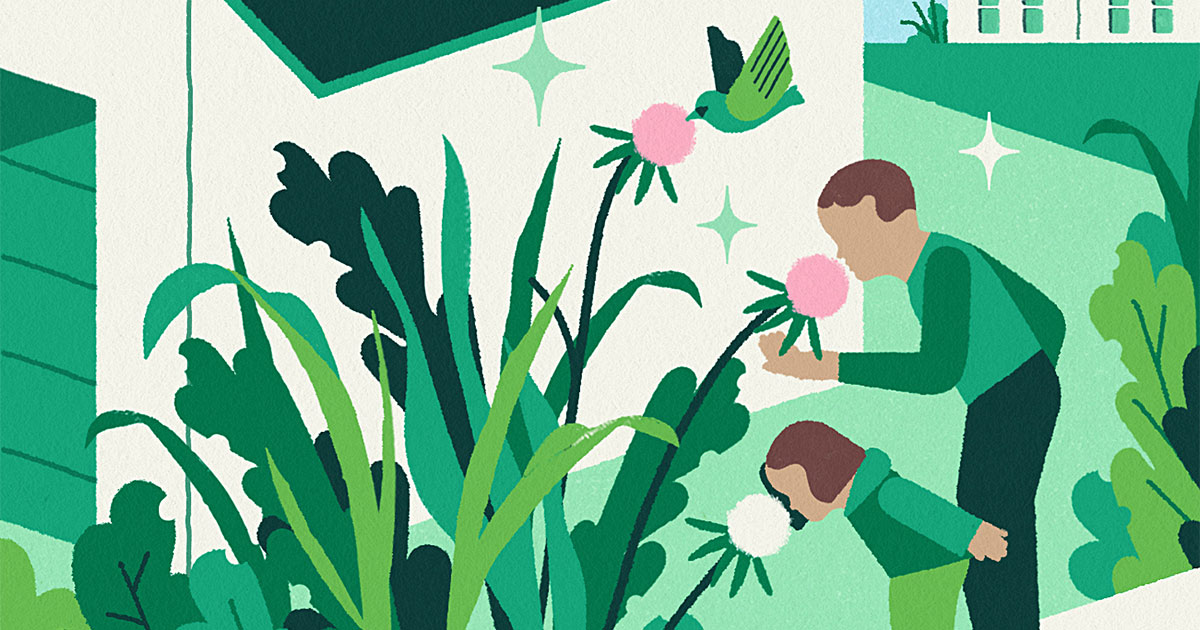Even as her yard blossomed with black-eyed Susans and milkweed, Melinda Soltys didn’t consider herself a gardener; she just wanted to see more wildlife. After learning how native vegetation improves habitat for the animals she hoped to attract, Soltys grew a haven for birds and butterflies in her front yard. “As soon as you start researching,” she says, “you realize it’s all about the plants.”
But hers is among the growing number of American households that belong to a homeowners association (HOA). U.S. Census Bureau data show that 84 percent of new, single-family homes sold in 2022 belonged to one of these private entities that collect fees from residents in exchange for services like trash pickup and snow removal. Associations also set rules for what members can do with their property, and in June 2021 Soltys received a letter: The flourishing native species she’d lovingly grown broke the restriction against “weeds.” She would have to rip them out.
Soltys decided to push back. She tidied up her plantings, but she also partnered with regional environmental nonprofits to help introduce a bill in the Virginia legislature to protect the right to grow native plants in HOA communities. Soltys was inspired by first-in-the-nation legislation passed in nearby Maryland in 2021—born of a like-minded couple’s years-long and costly legal battle with their own HOA—that now serves as a template for other states. Last year, Maine enacted a similar bill, and Minnesota went a step further, requiring not just HOAs but all municipalities to allow natural landscaping.
The idea behind these HOA rules, which often mandate pristinely mowed grass lawns, is to protect property values, but some evidence suggests they may not achieve that goal. Still, even though enthusiasm for ecologically vibrant yards is growing, many people see native plants as “messy,” says Andrew Tufts, manager of Maine Audubon’s Bringing Nature Home program, who testified in support of that state’s bill. He hopes the new laws will shift that perception by making bird-friendly yards more commonplace—and notes that they need not buck convention when it comes to appearance: “You can insert native plants into existing design aesthetics often quite seamlessly.”
But even when blending in, native flora excel where conventional lawns and exotic plants fall short: creating healthy and much-needed habitat for local insects, birds, and other animals. Drawing these species right to people’s homes is the best way to change minds about native plants, says Renee Grebe, Northern Virginia conservation advocate at the nonprofit Nature Forward, who worked with Soltys to shape and promote the Virginia bill. “When you see the magic, that unlocks everything,” Grebe says. There’s a practical argument, too, says Marlene Pantin, partnerships manager of Audubon’s Plants for Birds program: Homeowners and HOAs can save money with native plants, which often require less maintenance than lawns and ornamentals.
Some residents have found their HOAs eager to embrace the idea, particularly in drought-prone states like California and Arizona, since native plants can reduce water use and wildfire risk. In one Arkansas community, what could have become a conflict with the property owners association instead led to a fruitful collaboration, says Norma Wall, president of Hot Springs Village Audubon Society. By offering their knowledge of local ecology as a resource to the association leadership, Wall says, chapter members have been successful in several initiatives to support birds and other wildlife, including persuading the board to declare the week of Earth Day “Native Plant Week” in the community. “The fact that they can rely on us as an ally and vice versa has been the only way that we can make this thing work,” Wall says.
The new laws won’t let HOA members do whatever they want with their property. They call for “managed” natural landscapes, and in most cases landscaping plans will still require association approval. But in the states following Maryland’s lead, HOAs will no longer be allowed to categorically forbid native plants or require fully turfgrass yards.
In February, Virginia lawmakers punted their bill until 2025. But Soltys plans to keep pushing until it passes and she can turn her attention from the statehouse to her own home: “I have big plans.”
This story originally ran in the Spring 2024 issue as “Lawn Order.” To receive our print magazine, become a member by making a donation today.

